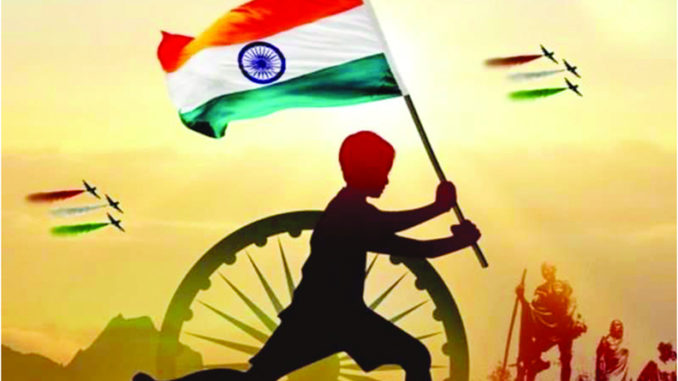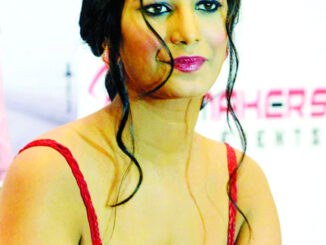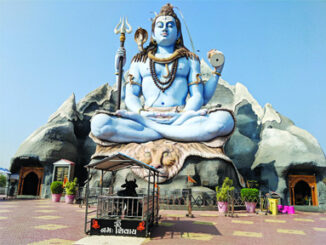
India observes Republic Day on January 26, every year. Republic Day marks an important event in India’s history. It commemorates the enactment of the constitution of India which came into effect on January 26, 1950, and made the nation into a republic. The main attraction of the day is the Republic Day parade which begins at Rajpath, Delhi, and ends at India Gate. That year the country will be celebrating its 73rd Republic day.
On this day, the President hoists the flag at Rajpath, New Delhi. Ceremonious parades showcase India’s defence, cultural abilities, cultural and social heritage.
The president of India, who is also the Commander-in-Chief of the Indian Armed Forces, takes the salute.
Every year, the President distributes Padma Awards to the civilians of India, which is the second-highest civilian award in India after Bharat Ratna.
Republic Day 2022: History
Every year, since 1950, January 26 is celebrated as Republic Day in India. It was on this day, in 1950, that the Indian constitution came into existence.
The constitution was adopted by the Indian Constituent Assembly on November 26, 1949, and came into effect 1 year later, on January 26, 1950, with a democratic government system.
Republic Day 2022: Significance
The constitution of India is a huge document that lays down procedures, powers, duties, fundamental rights and directive principles of the Government of India & Indian citizens.
This day marks the celebration of the empowerment of Indian citizens to select their own government.It is a national holiday that commemorates the process of the establishment of the Indian Constitution. Only 5,000-8,000 people to be allowed in parade amid COVID-19
The number of people that would be allowed to attend the Republic Day parade this year would be curtailed by 70-80 per cent to approximately 5,000-8,000 due to the ongoing wave of COVID-19, senior officials of the defence ministry said on Tuesday.
Approximately 25,000 people were allowed to attend the last year’s parade. Moreover, the decision on whether chief guests will come or not for this year’s parade is yet to be taken by the Ministry of External Affairs, the officials mentioned. There was no chief guest at the parade last year.
Officials said the aim is to keep the people away and maintain social distancing at all times so that the parade should not become a super spreader event. Therefore, the numbers have been significantly curtailed, they added.m While the exact number is yet to be decided, it would be anywhere between 5,000-8,000 people this year, they mentioned. People would be encouraged to watch the parade on TV and livestreaming, they stated.
The decision regarding chief guests is being handled by the Ministry of External Affairs and we will wait for their decision in this regard, the officials said.
There will be no foreign chief guest on Republic Day this year due to the coronavirus crisis and the Omicron threat. The Government had reportedly sent invitations to the Heads of States of five Central Asian countries.
“There will be no foreign chief guest from Central Asian countries on Republic Day this year due to COVID-19. The government had sent invitations to the Heads of State of five Central Asian countries but the plans have now been cancelled,” government sources told news agency ANI.
Republic Day signifies the right spirit of Independent and individual India. The important symbols of the festival include the exhibition of military equipment, the national flag and military equipment.
Mohandas Gandhi struggled through decades of passive resistance before Britain finally accepted Indian independence. Self-rule had been promised during World War II, but after the war triangular negotiations between Gandhi, the British and the Muslim League stalled over whether to partition India along religious lines. Eventually, Lord Mountbatten, the viceroy of India, forced through a compromise plan. On August 15, 1947, the former Mogul Empire was divided into the independent nations of India and Pakistan. Gandhi called the agreement the “noblest act of the British nation,” but religious strife between Hindus and Muslims soon marred his exhilaration. Hundreds of thousands died, including Gandhi, who was assassinated by a Hindu fanatic in January 1948 during a prayer vigil to an area of Muslim-Hindu violence. Of Gandhi’s death, Indian Prime Minister Jawaharlal Nehru said, “The light has gone out of our lives, and there is darkness everywhere.” However, Nehru, a leader of the Indian struggle for independence and Gandhi’s protege, persisted in his efforts to stabilize India, and by 1949 the religious violence began to subside. In late 1949, an Indian constitution was adopted, and on January 26, 1950, the Republic of India was born.
With universal adult franchise, Nehru hoped to overcome India’s “caste-ridden” society and promote greater gender equality. Elections were to be held at least every five years, and India’s government was modeled after the British parliamentary system. A president would hold the largely ceremonial post of head of state but would be given greater powers in times of emergency. The first president was Rajendra Prasad.
Nehru, who won his first of three subsequent elections in 1952, was faced with staggering challenges. A massively underdeveloped economy and overpopulation contributed to widespread poverty. Nehru also had to force the integration of the former princely states into the Indian union and suppress movements for greater autonomy in states like Punjab. In his years of struggle against Britain, he always advocated nonviolence but as prime minister sometimes had to stray from this policy. He sent troops into the Portuguese enclaves of Goa and Daman and fought with China over Kashmir and Nepal. He died in 1964 and was succeeded by Lal Bahadur Shastri. Later, Nehru’s only child, Indira Gandhi, served four terms as a controversial prime minister of India. Republic Day is celebrated all over India with great gratification and joy. It’s a day to honour the Constitution of independent India. National flag hoisting in schools and colleges are regular. Cultural events advocating India’s struggle for freedom is held countrywide. In New Delhi, the national flag is hoisted by the President of India at India Gate. The gloriest of parades takes place at Rajpath, New Delhi. The parade is conducted by the Indian President and is arranged by the Ministry of Defence. Other than displaying its military prowess, the event also promotes India’s diverse culture. The event also colonizes to the martyrs who have sacrificed their lives for the country. The Prime Minister of India honours the martyrs by putting a ringlet at the Amar Jawan Jyoti at India Gate. It’s followed by a 21-gun salute, national flag hoisting, and national anthem. Awards are presented to the brave soldiers in the form of Paramvir Chakra, Ashok Chakra, and Vir Chakra. Even children and general citizens who have displayed courage in times of adversity are honoured with awards.
The winners of gallantry awards salute the President in military jeeps. This is followed by India’s display of its military power. March-past by the armed forces, police, and National Cadet Corps also takes place with the President of India receiving the salute from different regiments. The parade comes to an end when the Indian Air Force fighter jets flypast Janpath. The celebration takes place all over the country, however, Delhi being the capital of India, witnesses the largest of Republic Day celebrations. Live Webcast of the Republic Day Parade is made accessible every year to millions of people who wish to view the parade over the Internet. After the event is over, the exclusive footage is made obtainable as ‘video on demand’.Celebrations, though on a relatively smaller scale, are also held in all state capitals, where the Governor of the state unfurls the flag. Same celebrations are also held at district headquarters, subdivisions, talukas, and panchayats.





Be the first to comment